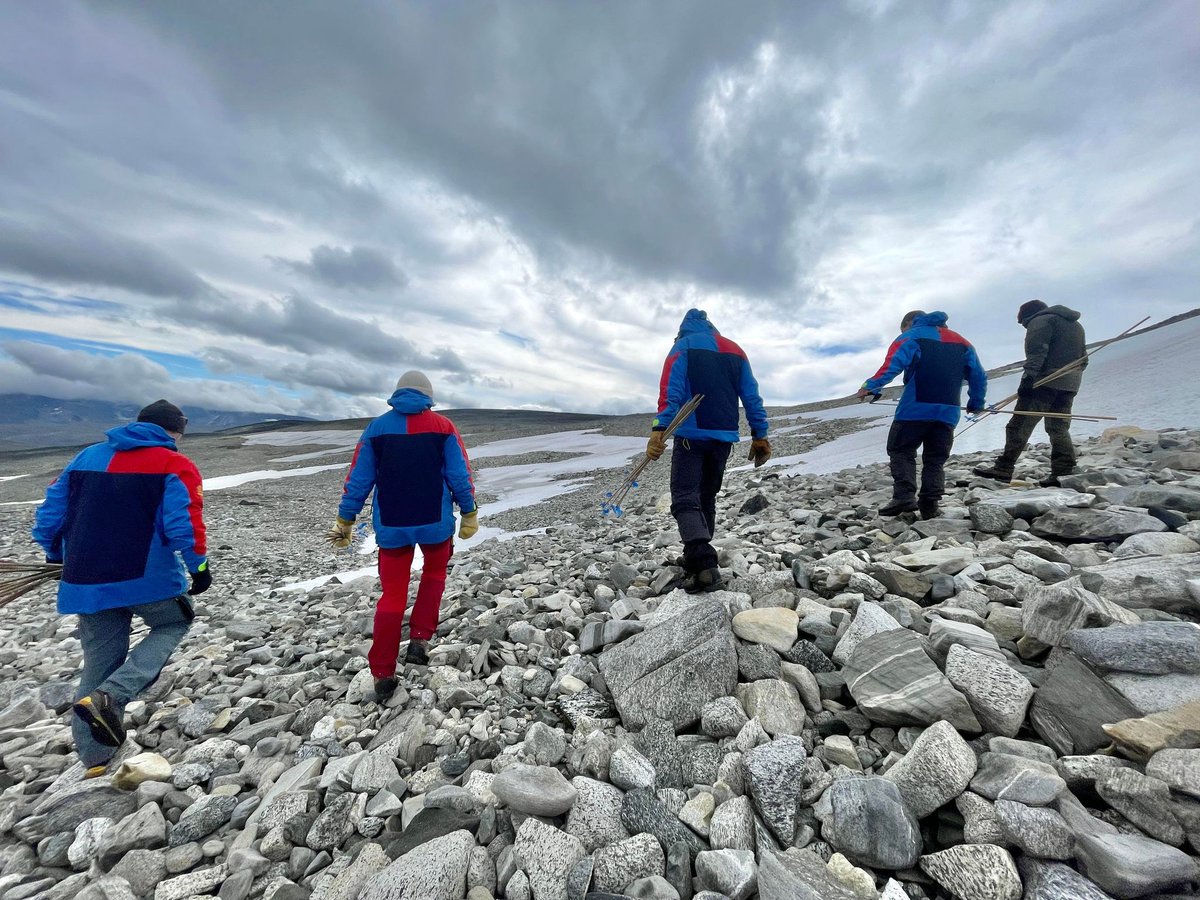
The archaeology of glaciers and ice patches. Our work has been covered by National Geographic, Science, CNN, BBC, der Spiegel et al. @Glacialarchaeo1 tweeting
How to get URL link on X (Twitter) App


 On closer inspection, a diamond twill pattern emerged. Little did we know at the time how incredible this find really was. Maybe just as well, or our hands would have been trembling when we lifted the find and packed it for transport...
On closer inspection, a diamond twill pattern emerged. Little did we know at the time how incredible this find really was. Maybe just as well, or our hands would have been trembling when we lifted the find and packed it for transport... 

 She had used such objects on a local farm in the 1930s!😮 She told us that it is a bit for young animals, mainly goat kids and lambs, to stop them from getting milk from their mothers.
She had used such objects on a local farm in the 1930s!😮 She told us that it is a bit for young animals, mainly goat kids and lambs, to stop them from getting milk from their mothers.



 This picture gives you an impression of the vast size of the site. The light-coloured scree has been exposed by ice retreat in the last 20-25 years. The lichen-free zone, as we call it, covers around 300000 square meters on this site, so there is a lot of ground to cover.
This picture gives you an impression of the vast size of the site. The light-coloured scree has been exposed by ice retreat in the last 20-25 years. The lichen-free zone, as we call it, covers around 300000 square meters on this site, so there is a lot of ground to cover. 

 We discovered the arrow between stones in the scree. It was found near the lower edge of the ice but was probably lost in the snow further up the slope. When it later melted out, it was transported downslope by meltwater, and ended up on the ground where we found it.
We discovered the arrow between stones in the scree. It was found near the lower edge of the ice but was probably lost in the snow further up the slope. When it later melted out, it was transported downslope by meltwater, and ended up on the ground where we found it. 

 In 2019, the ice patch was hit by a major melt and some really well-preserved arrows melted out. The earliest arrow is now dated to the Stone Age (photo). We still have a lot of unsurveyed ground on the site, so let's go!🙂
In 2019, the ice patch was hit by a major melt and some really well-preserved arrows melted out. The earliest arrow is now dated to the Stone Age (photo). We still have a lot of unsurveyed ground on the site, so let's go!🙂 

 Back in 2014, the Secrets of the Ice program found an exceptional pre-Viking ski, 1300 years old, at the Digervarden Ice patch. The ski was complete, including the binding – one of only two skis from prehistory in this condition.
Back in 2014, the Secrets of the Ice program found an exceptional pre-Viking ski, 1300 years old, at the Digervarden Ice patch. The ski was complete, including the binding – one of only two skis from prehistory in this condition. 

 Is it possible that future melting could reveal archaeological finds that date back to the last Ice Age, as envisaged in this prophetic cartoon by Gary Larsson? Could we find remains of Ice age hunters at the bottom of the ice? /2
Is it possible that future melting could reveal archaeological finds that date back to the last Ice Age, as envisaged in this prophetic cartoon by Gary Larsson? Could we find remains of Ice age hunters at the bottom of the ice? /2 